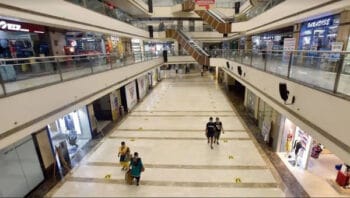 According to rating agency CRISIL, a subsidiary of US firm S&P Global, revenue growth of India’s organised apparel retail sector is set drop to 15-20 per cent in this fiscal from the expected 30-35 per cent. The reason being temporary store closures, restricted mobility and curtailed discretionary spending because of the second wave of the pandemic.
According to rating agency CRISIL, a subsidiary of US firm S&P Global, revenue growth of India’s organised apparel retail sector is set drop to 15-20 per cent in this fiscal from the expected 30-35 per cent. The reason being temporary store closures, restricted mobility and curtailed discretionary spending because of the second wave of the pandemic.
“Slower recovery in revenue will mean operating margin of apparel retailers will remain moderate at 4-5 per cent for this fiscal, compared with our earlier expectation of 7-8 per cent”, CRISIL said in a press release.
Retailers may have to take recourse to additional debt to plug near-term cash-flow mismatches, which could impact their credit quality. That said, CRISIL-rated apparel retailers are expected to be better placed due to strengthened balance sheets, supported by equity raise of close to ₹2,000 crore made in the last fiscal.
This is based on an analysis of 60 CRISIL-rated apparel retailers, which account for a third of the sector revenue. It assumes staggered easing of localised restrictions and reopening of stores, leading to demand recovery from the second quarter of this fiscal, as the impact of the second wave abates and the vaccination drive gathers pace.
Localised restrictions starting from the second half of April this year resulted in pan-India average retail mobility (footfalls to retail stores) falling sharply to 36 per cent of the pre-pandemic level in May compared with 77 per cent in February.
Temporary store closures and constrained mobility have sharply impacted sales of apparel retailers in the first two months of this fiscal, though reopening from June is likely to ignite a gradual recovery.
Amid this sharp impact on offline sales, acceleration in online shopping has been a saving grace and bodes well for retailers with omni-channel presence. The share of e-retail sales will likely rise to 8-9 per cent this fiscal compared with pre-pandemic level of 4-5 per cent.
To clear inventory and attract footfalls, retailers may offer higher discounts, especially during initial months of reopening of stores, and this could impact profitability. However, renegotiation of rental arrangements and trimming of employee cost, which together account for 20 per cent of revenue, will help keep operating margin at 4-5 per cent this fiscal, a slight improvement over 3-4 per cent in the last, but much below the pre-pandemic level of nearly 9 per cent.
Some players with weak balance sheets and modest credit quality may require additional debt to plug cash-flow mismatches in the first half of this fiscal.





















